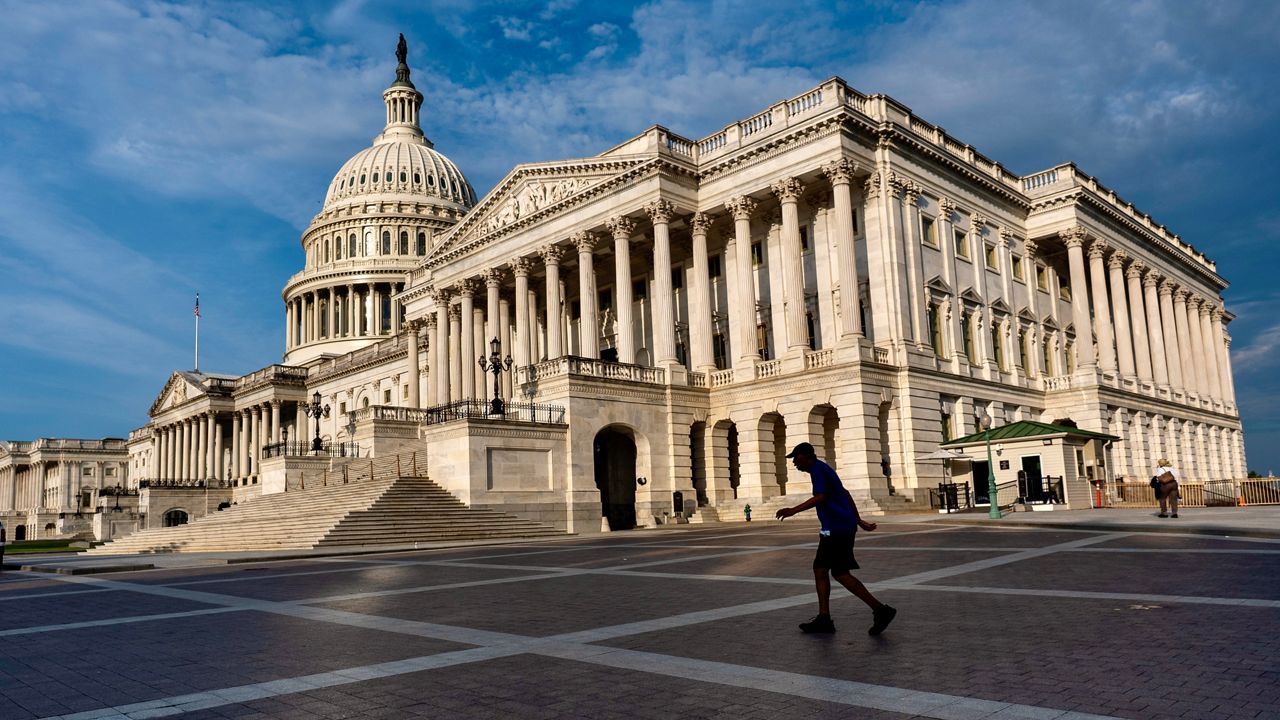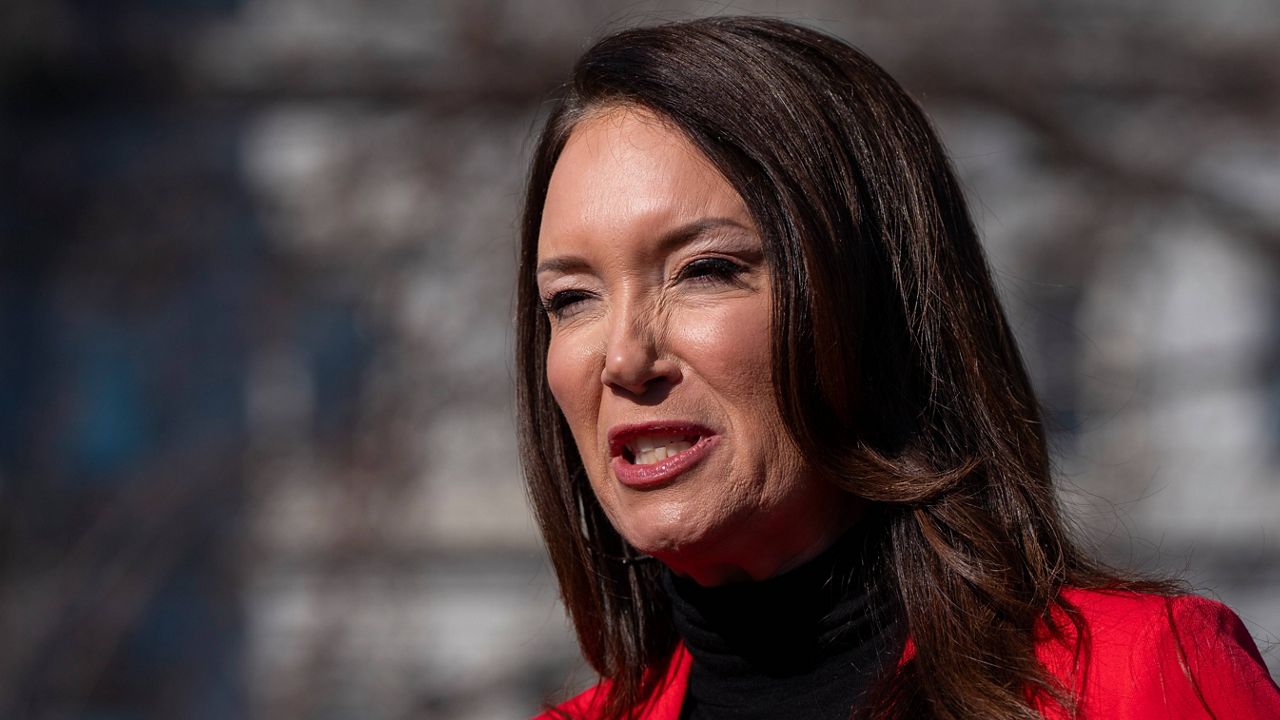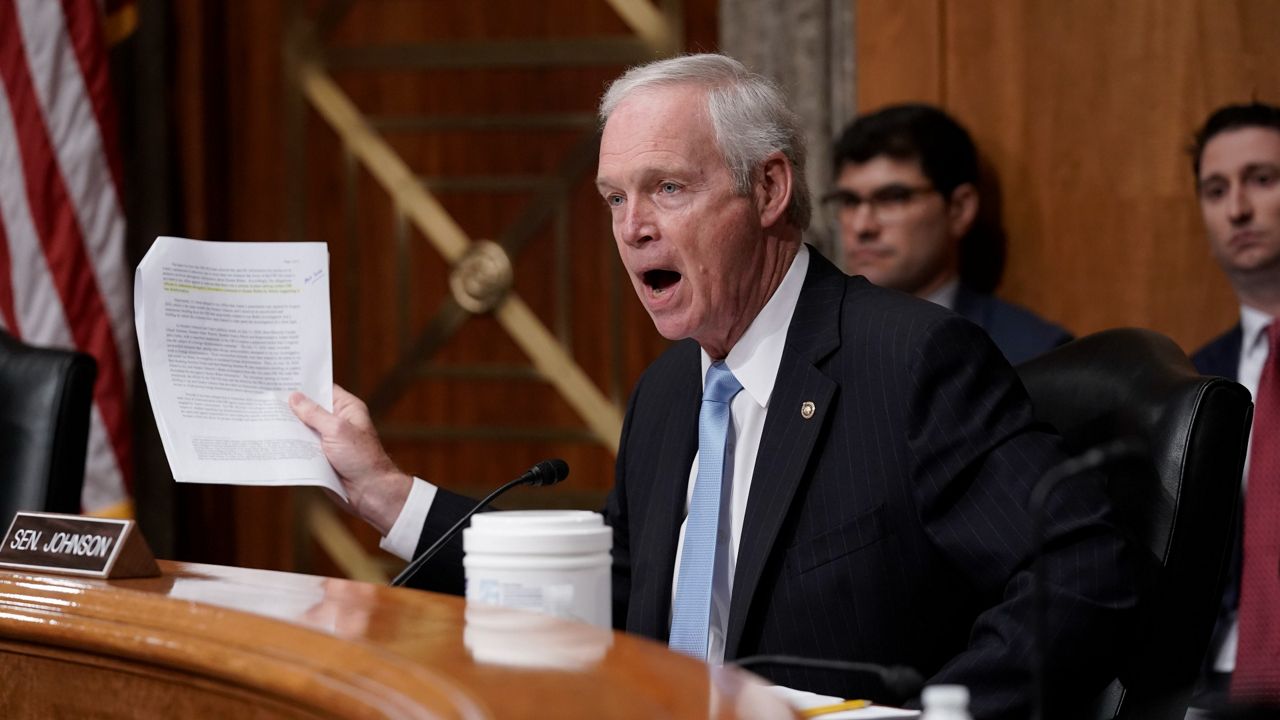WASHINGTON — It was an emotional morning on Capitol Hill in early June, when lawmakers shared personal experiences of domestic violence.
“I'll never forget taking a gun, getting in the middle of a gun, between my father and my mother, keeping my father from killing my mother,” said Rep. Debbie Dingell, D-Michigan.
“I, too, have had a gun put to my head, and so I know what it's like to fear for my life,” added Rep. Gwen Moore, D-Milwaukee.
This comes after the Trump administration proposed cutting funding to help women in such situations.
Attorney General Pam Bondi signaled that cuts were on the way when she posted in April that the Justice Department was eliminating millions of dollars in “wasteful grants,” as the Trump administration moves to reduce federal spending.
Soon after, a bipartisan group of lawmakers wrote Bondi that a delay or reduction in funding for the Office on Violence Against Women (OVW) “will have devastating consequences for the countless individuals who rely on these resources for safety, legal protection, and recovery.”
The Office administers grants that provide support for survivors of domestic violence, dating violence, sexual assault and stalking.
Pamela Jacobs, CEO of the National Resource Center on Domestic Violence, said while many organizations have had their grants restored, there are concerns about what will happen in the future.
“To have funding taken away means that they’re having to tell families who are coming to them in crisis, who are in life or death situations, that they can’t serve them, and then to have to wait and see whether funding will be restored,” Jacobs said. “When it is restored, there’s this uncertainty about how consistent that will be, how guaranteed it is, so it’s just created a lot of chaos and trauma across the field.”
The 2026 budget proposed by the president late last month would provide just over $500 million to the Office on Violence Against Women, which is 29% less than the current budget. The President’s proposal is a starting point for Congress. Lawmakers are now crafting their own appropriations bills.
Experts say even at current funding levels, needs aren’t being met.
“In 2024, there were 79,000 people receiving domestic violence services in just one day, but there were 14,000 people who were turned away because resources were not available, and that’s with funding at the level that it was at in 2024,” Jacobs said. “So, if we see additional funding cuts, we’re going to see the number of people who are turned away continue to grow, and that could be turned away from shelter, from counseling, supportive services, housing. And that, of course, is going to result in just further difficulties for those families, as well as further strain on other resources.”
The White House also wants to merge the Justice Department’s grant components. It would consolidate the Office of Community Oriented Policing Services, Office of Tribal Justice, and Office on Violence Against Women within the Office of Justice Programs to “eliminate duplicative positions, infrastructure and programs.” One expert laid out the problem with that plan.
“The risk factors for homicide are different for women who are being abused versus women in the community in general,” said Jacquelyn Campbell, a professor at the Johns Hopkins University School of Nursing. “You need review panels of people who are specialists in order to say, ‘Yes, this grant proposal has great promise. This one, not so much.’”
Denise Hines, a professor of social work at George Mason University, said it’s “essentially impossible” to do violence research using federal funds right now.
“Even if those opportunities were to come back,” she said, “I don’t trust that I would be able to keep a grant that I earned at this point in time from the federal government. On the whim of somebody saying that what I’m doing is not worthy, they could just cut it off midstream. So it’s really very demoralizing that the federal government is saying we’re not going to fund violence research anymore… What that just means for us as a society, that we don’t care about this issue, and we’re cutting off research that could help keep us safer, doesn’t bode well for what the future would bring.”
Moore, the Democrat from Milwaukee, also raised concerns that Republican-proposed cuts to the federally funded food and health care programs known as SNAP and Medicaid, respectively, will also lead to an increase in domestic violence. Jacobs agreed, saying economic insecurity is the number one reason victims aren’t able to leave an abusive relationship.
“It’s very common for an abusive partner to make it difficult for a victim to be able to get or maintain a job, so tactics like calling the victim’s job 100 times a day until she gets fired, or keeping her up fighting all night so that she can’t really function at work the next day,” Jacobs said. “And of course, all of that is orchestrated to be able to gain and maintain control over that person, because if you’re not working, you don’t have income, it’s much more difficult to be able to get away… Nationwide, about 11% of people are experiencing food insecurity. But for victims of domestic violence, 54% are experiencing food insecurity. So how can we expect someone to leave an abusive relationship if she’s not able to feed her children?”
Follow Charlotte Scott on X.









